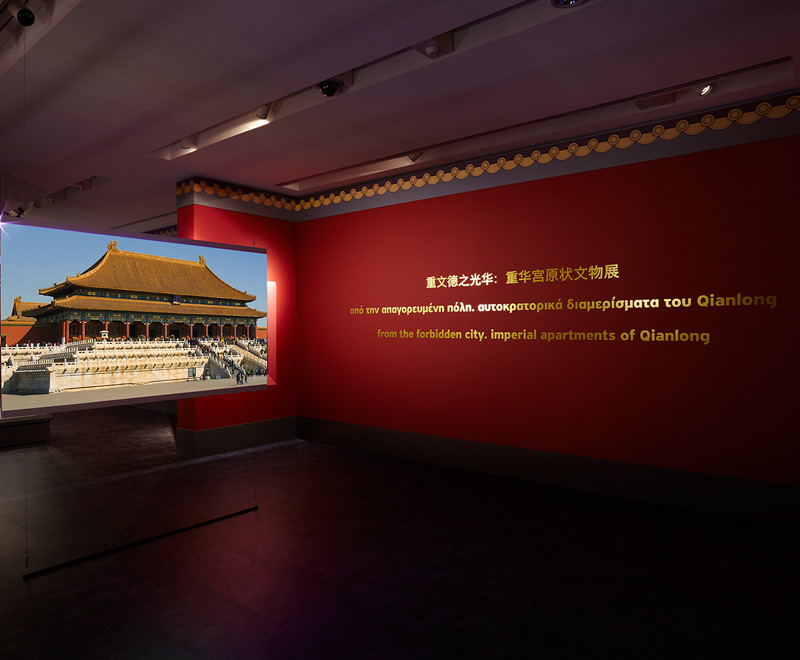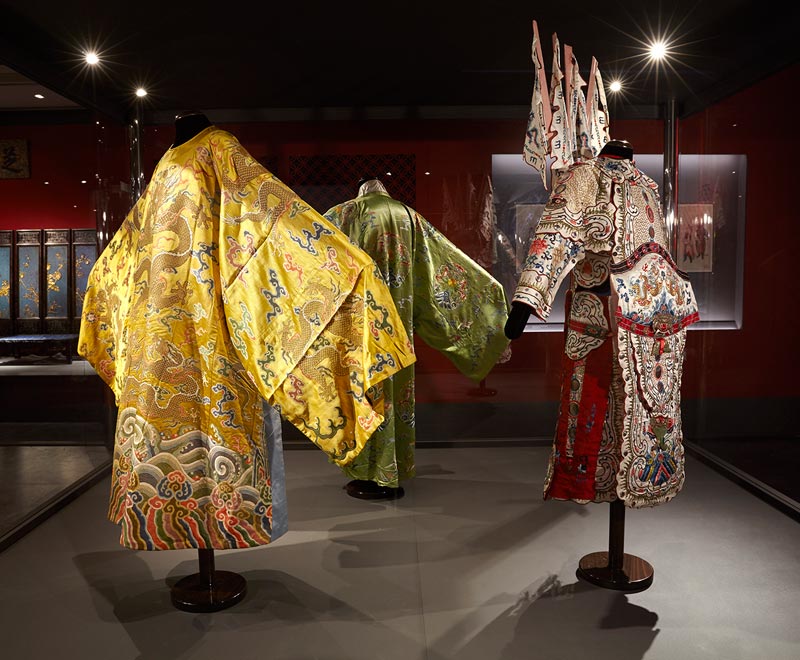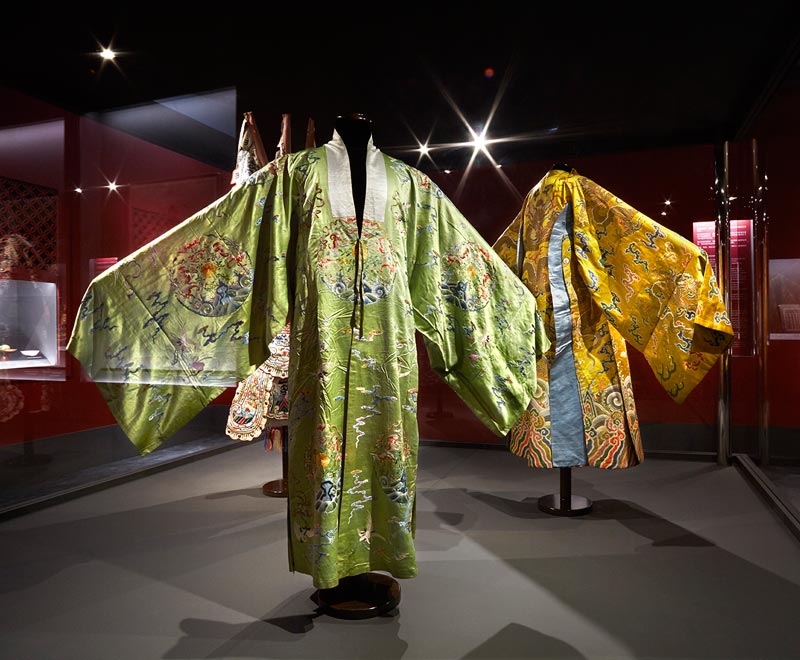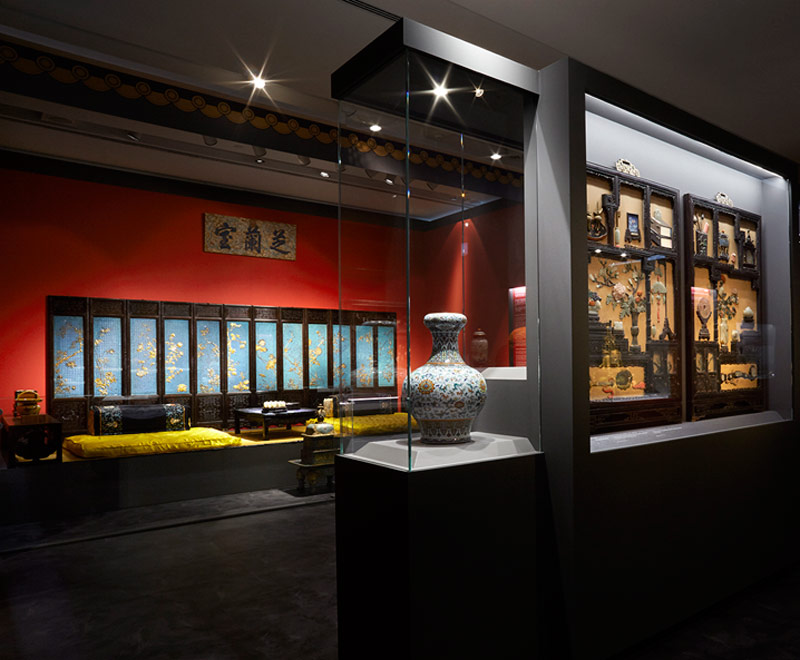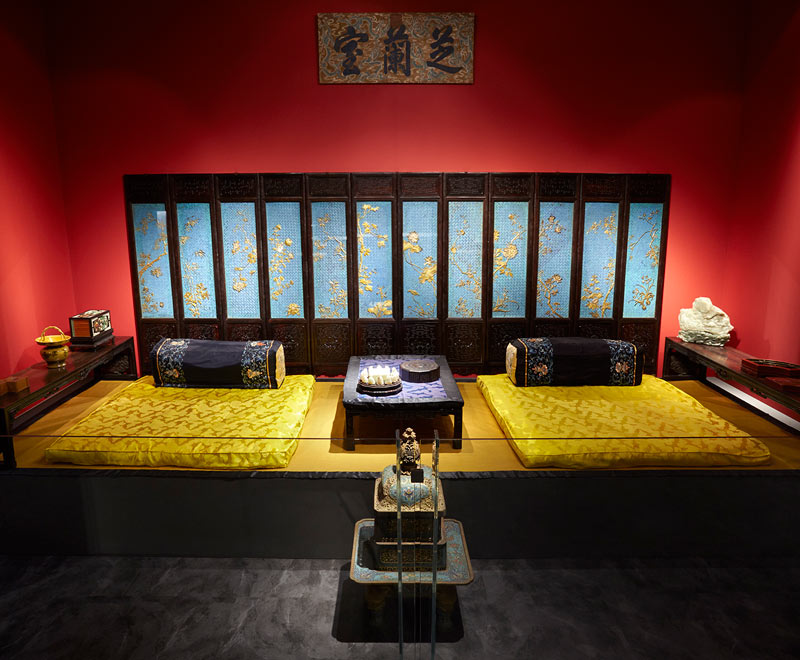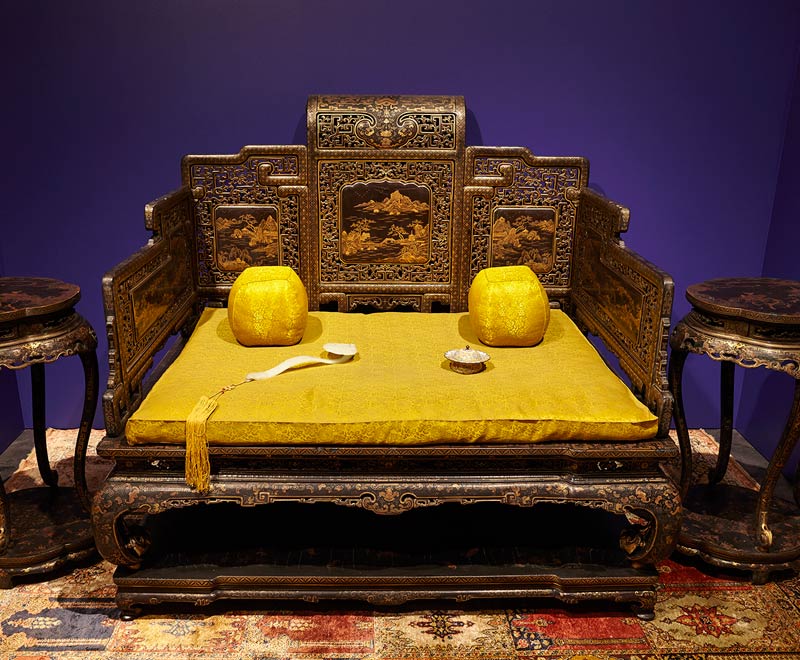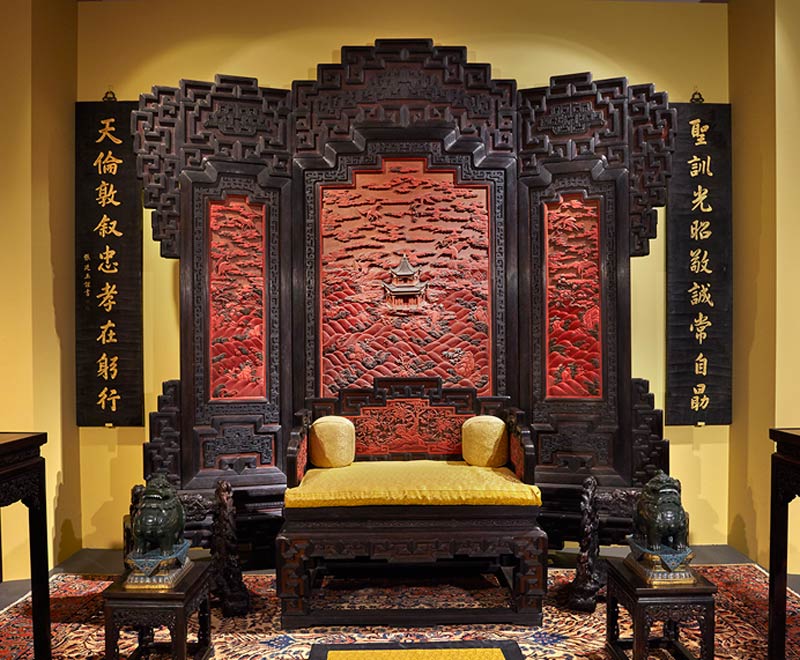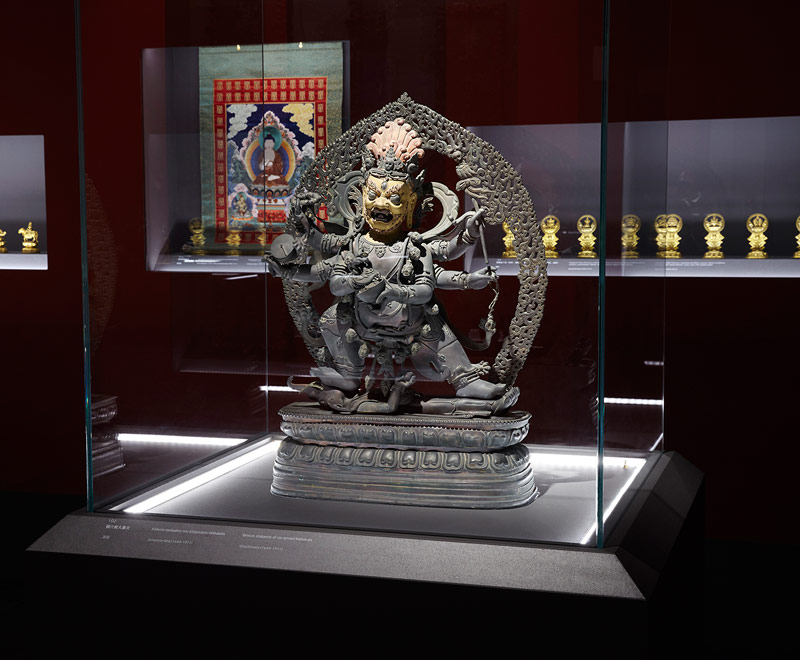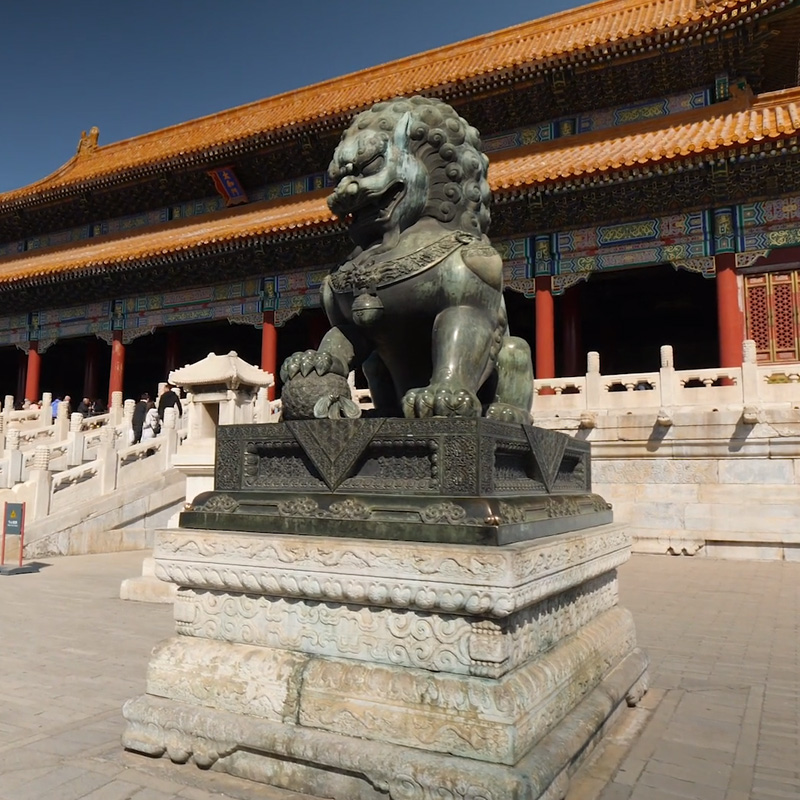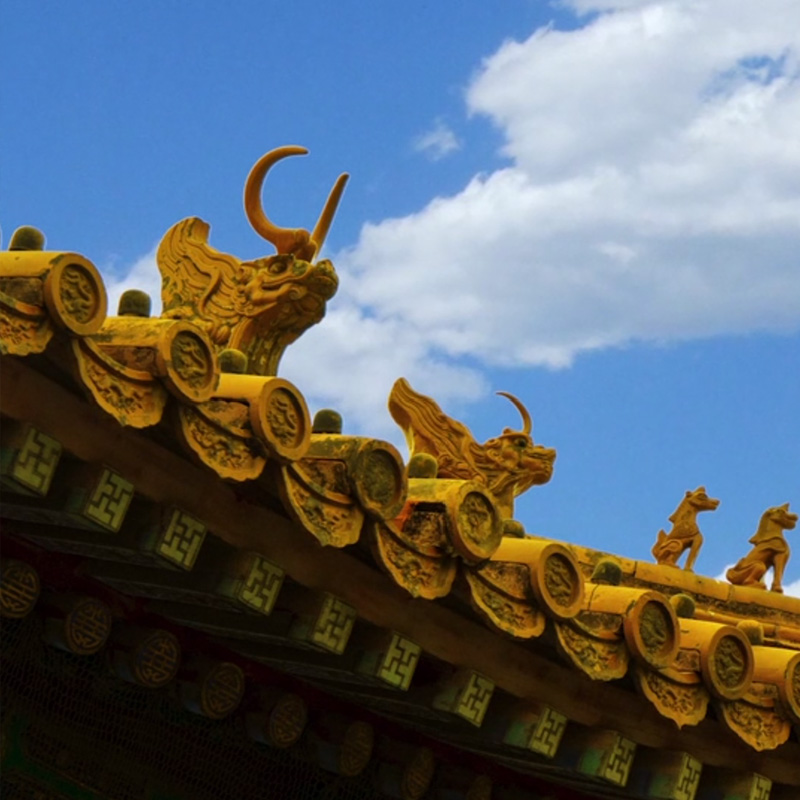From the forbidden city: imperial apartments of Qianlong
For the first time, an exhibition of personal possessions, works of art and furniture from the private apartments of China’s Emperor Qianlong (1711 - 1799), representing a century of Chinese culture, are travelling from Beijing’s Forbidden City to the Acropolis Museum.
Qianlong was the emperor known for reforming China, doubling its size and population, caring for the welfare of its citizens and passionately supporting Chinese arts and letters. He remained on the throne for sixty years (1736 - 1795), leaving his personal mark on the art of 18th century China.
The current design of the Acropolis Museum’s temporary exhibition gallery has been inspired by the buildings, colours and forms of the palaces in the Forbidden City. The exhibition features 154 exquisite displays that illuminate the emperor's private chambers – the residence where he spent his youth and, in his words, where he drafted his subsequent plans for the successful administration of his vast country.
Visitors entering the exhibition are greeted with the emperor’s golden, embroidered ceremonial robes and an enormous portrait painted immediately after his ascent to the throne. Just beyond is a display of the empress’ ceremonial attire, followed by the royal throne, with all of its associated furniture and fittings. The next section features the tea services used by the emperor and his guests, texts of his own poetry and actors’ costumes for private theatrical performances. The “Room of Fragrant Orchids” which follows reveals the heated bed of the imperial couple, wall screens with rare floral decoration and intriguing decorative works reflective of the emperor’s personal taste. Further displays of furniture include a second throne adorned with gold and the emperor’s personal desk decorated with white jade plaques. Here, the gifted ruler spent many hours of the day writing texts about the beauty of his country, human relations and the proper exercise of royal authority. The exhibition closes with exceptional Buddhist artworks in precious materials: ritual vessels, religious dedications, wise proverbs and the particularly impressive statues of the young Buddha, the third Dalai Lama and a Buddhist missionary – all demonstrating the predominant role of Buddhism in the Emperor's life and residential surroundings.
The exhibition, organized in collaboration with the Palace Museum in the Forbidden City, Beijing, is part of the Greek Ministry of Culture and Sports’ cultural programme “Greece - China Year".
The aim of the exhibition is to bring a closer acquaintance between the western world and the rich culture of China, as revealed by its distinctive qualities during the glorious reign of Emperor Qianlong.
Refreshing of the exhibits
Beginning Friday, 14 December, 2018, visitors to the Acropolis Museum will have an opportunity to view the refreshed displays of the temporary exhibition "From the Forbidden City: Imperial Apartments of Qianlong". Twelve important displays are being withdrawn from the original exhibition, due to the sensitivity of their materials, and replaced with an equal number of works of equivalent historical and artistic significance.
Among the most prominent displays to be refreshed is the portrait of the young Emperor Qianlong in formal dress. In its place will be presented another royal portrait that depicts him at advanced age, with the wisdom of his years apparent in his thoughtful countenance. Visitors will also have the chance to enjoy newly installed, elaborately embroidered costumes of imperial court actors, as well as scrolls and illustrated theatre books with new performances.
EXHIBITION INFORMATION
DURATION
LOCATION
Temporary Exhibition Gallery, ground floor of the Acropolis Museum
TICKETS
Tickets for the exhibition can be purchased at the Museum’s ticket counter.
Price: 3 euros
LANGUAGES
Greek, English
The exhibition is accompanied by a trilingual catalogue (Chinese, Greek, English). Read more
IMAGES
VIDEO
GALLERY TALKS
Guided by the Acropolis Museum’s archaeologist-hosts, visitors will catch a glimpse of rarely seen artifacts, art works and furniture, revealed to the public for the first time from the private palace quarters of the Chinese emperor Qianlong (1711-1799), in the Forbidden City of Peking (Beijing). The exhibition galleries, designed with constructed displays and colours inspired by the palaces of the Forbidden City, hold 154 exquisite displays that reveal the distinctive personal quarters of the Emperor and illuminate a century of Chinese culture.
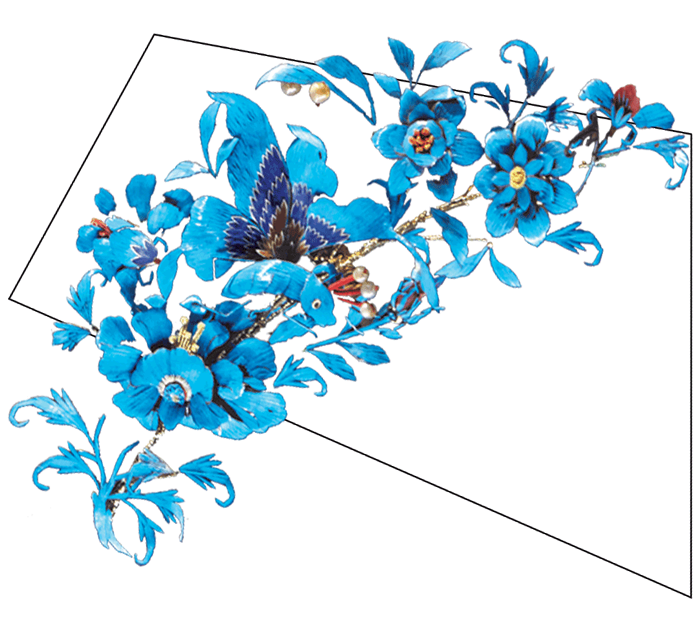
USEFUL INFORMATION
Every Saturday & Sunday, at 11 a.m. & 1 p.m.
Please register at the Information Desk inside the Museum entrance on the day of the tour.
First come, first served.
The use of your data is described in the privacy settings




